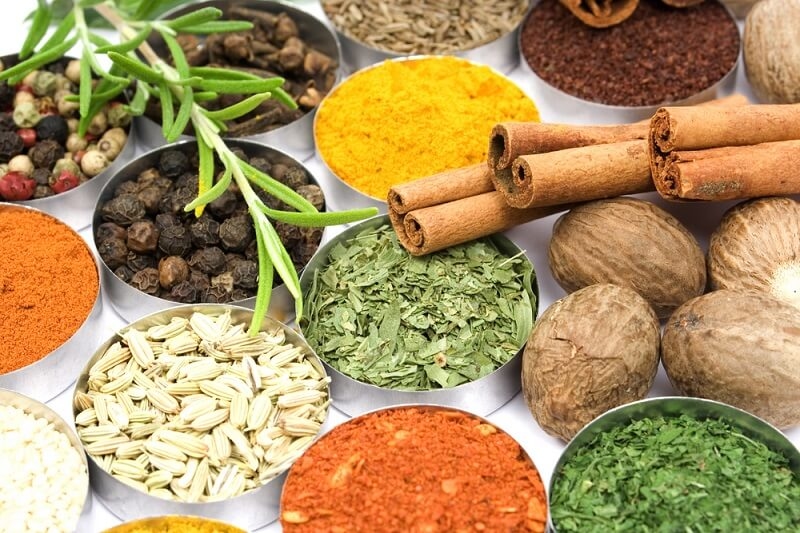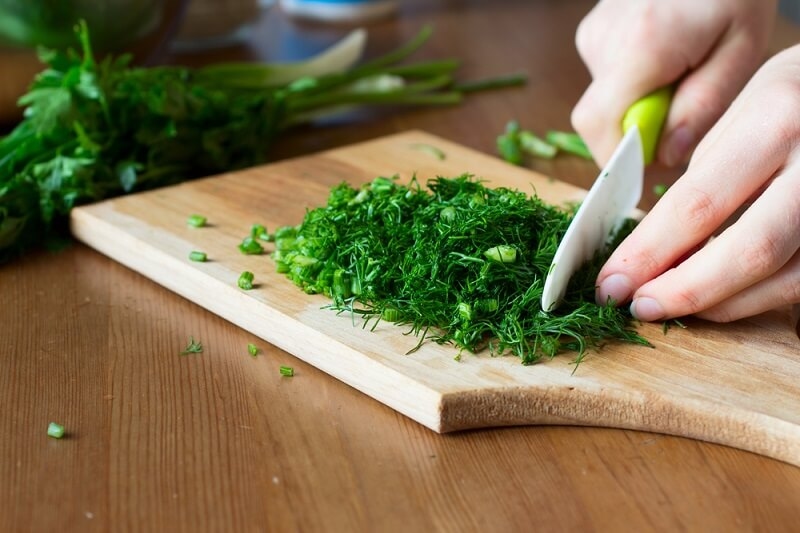How to Use Herbs to Boost Flavor in Your Home Cooking

Home cooking can be dull at times, but the addition of herbs can totally change your food. Ever wondered what to do to make your food brighter, fresher, and tastier? It is herbs that are the key ingredient. We are going to explore the usage of herbs in this blog, the distinction between fresh and dried herbs, herbs and spices, making your own seasoning blends, and preserving your fresh herbs. Being an amateur cook or someone who just likes experimenting with food in the kitchen, you will now feel confident about using herbs to enhance your day-to-day foods with this guide.
How to Use Herbs in Your Cooking
There is more to it than sprinkling some green stuff on your cooking. Understanding how to use the herbs can entirely change the flavor of your meal. Herbs are tasty, fragrant, and even healthy. With them, you will not need to go out of your way to have restaurant-quality food by just using them properly.
Understanding Different Types of Herbs
It is necessary to learn what kind of herbs you may add to your meals:
- Basil: Sweet and fragrant, used with pasta, salads, and sauces.
- Parsley: Fresh and mild, good as a garnish or flavor to soups.
- Rosemary: Woody and very strong, good with the roasted veggies and meats.
- Thyme: It is earthy and delicate, and it can be used in stews, soups, and roasts.
- Cilantro: Bright and citrusy, best in Mexican and Indian dishes.
Every herb possesses a personality, and the application of the correct one can make a simple meal memorable.
Adding Herbs at the Right Time
The time of herb addition is important:
- Fresh herbs: These are added at the last part of the cooking process to retain their flavor and aroma.
- Dried herbs: They can be put in earlier in cooking so that the flavors can develop.
- Infusion of herbs: These herbs are infused into oils, butter, or sauces. This is a light addition of flavor that is layered.
By understanding when to apply them, you will, at the same time, ensure you have maximum flavor without making your food overpowering.
Pairing Herbs and Spices
Pairing herbs with spices can be intimidating at first, but once you get the hang of it, your cooking will taste balanced and exciting.
Basics of Pairing
Some combinations are classics for a reason:
- Basil and Oregano – Perfect for Italian dishes like pasta and pizza
- Thyme and Rosemary – Great with roasted meats and vegetables
- Cilantro and Cumin – Brings freshness to Mexican and Indian recipes
- Mint and Coriander – Works well in Middle Eastern dishes
Experimenting with Combinations
Don’t be afraid to mix herbs and spices. Start small and taste as you go. You might discover your own signature combination that makes your meals unforgettable.
Fresh vs Dried Herbs

Understanding the difference between fresh and dried herbs is key to cooking with confidence. Each type brings its own strengths to the table.
Fresh Herbs
Fresh herbs are vibrant, aromatic, and visually appealing. They’re best for dishes where a bright, fresh taste is desired.
- Uses – Garnishes, salads, finishing touches
- Examples – Basil, parsley, cilantro, dill
Dried Herbs
Dried herbs have concentrated flavors and are great for slow-cooked dishes. They last longer and are convenient for pantry storage.
- Uses – Soups, stews, marinades
- Examples – Oregano, thyme, rosemary
By knowing when to use each, you’ll get the perfect balance of taste and aroma in your meals.
Beginner Herb Cooking Guide
If you’re new to cooking with herbs, it’s easy to feel overwhelmed. This beginner herb cooking guide will give you the confidence to start experimenting.
Start Small
- Use one or two herbs at first
- Taste as you go to avoid overpowering your dish
Learn Simple Techniques
- Chopping – Finely chop herbs to release flavor
- Infusing – Add herbs to oils or butter for flavoring
- Blending – Mix herbs with spices to create your own seasoning
Recipes for Beginners
Simple Herb Roasted Chicken
Ingredients:
- 4 chicken thighs
- 2 tbsp olive oil
- 1 tsp dried thyme
- 1 tsp rosemary
- Salt and pepper to taste
- 2 cloves garlic, minced
Steps:
- Preheat oven to 400°F (200°C).
- Rub chicken with olive oil, garlic, thyme, rosemary, salt, and pepper.
- Place on a baking sheet and roast for 35-40 minutes until golden and cooked through.
- Serve hot with your favorite sides.
Seasoning Blends You Can Make at Home
Creating your own seasoning blends is a fun way to experiment and make cooking easier. Homemade blends often taste fresher than store-bought versions.
Easy Blends to Try
- Italian Herb Mix – Basil, oregano, thyme, rosemary
- Mexican Blend – Cumin, coriander, chili powder, oregano
- Herb and Garlic Mix – Parsley, thyme, garlic powder
Tips for Blending
- Use dried herbs for blends since they last longer
- Store in airtight jars in a cool, dark place
- Mix in small batches to maintain freshness
Storing Fresh Herbs
Keeping fresh herbs fresh can sometimes be tricky. Here’s how to make them last longer.
Best Practices
- Refrigerator storage: Wrap herbs in a damp paper towel and place in a sealed bag
- Water jar technique: Choose a jar of water, put the stems in it and cover it loosely with a plastic bag, and store it in the refrigerator.
- Freezing: Cut herbs, then put them in ice cube trays with water and freeze them.
Herbs That Last Longer
- A few weeks, Rosemary and thyme can last.
- Parsley and cilantro should be consumed within a week.
When your herbs are kept well, they remain fresh and tasty every time you cook.
Cooking With Herbs Every Day
Once you get used to the herbs, you will find new uses to incorporate them in your day-to-day cooking.
Quick Tips
- Scatter fresh herbs on avocado toast or scrambled eggs.
- Include herbs in a little amounts in pasta sauces and soups.
- Make butter/ oil blend herbs in easy marinades.
- Add herbs to drinks, such as basil in cocktails.
Herb Recipes to Try at Home
The following are some of the easy recipes:
Garlic Herb Butter
Ingredients:
- 1/2 cup unsalted butter, softened
- 2 tbsp chopped parsley
- 1 tsp minced garlic
- 1 tsp thyme
Steps:
- Mix all ingredients in a bowl.
- Spread on bread or top on meats and vegetables.
Fresh Herb Salad Dressing
Ingredients:
- 1/4 cup olive oil
- 2 tbsp lemon juice
- 1 tbsp chopped basil
- 1 tbsp chopped parsley
- Salt and pepper to taste
Steps:
- Shake all ingredients in a small bowl.
- Sprinkle your preferred salad.
Herb Roasted Vegetables
Ingredients:
- 2 cups mixed vegetables (carrots, zucchini, bell peppers)
- 2 tbsp olive oil
- 1 tsp rosemary
- 1 tsp thyme
- Salt and pepper to taste
Steps:
- Preheat oven to 425°F (220°C).
- Combine vegetables and olive oil, herbs, salt, and pepper.
- On a baking sheet, put in and roast 20-25 minutes until tender and a little caramelized.
Conclusion
Education to utilize herbs in your domestic kitchen is an adventure that is full of taste and adventure. Herbs have the power to do wonders for typical dishes. Fresh basil on pasta, rosemary on roasted chicken, and so on, each herb will make your dishes have a personality. Being aware of pairing herbs and spices, the distinction between fresh and dried herbs, mixtures of seasoning, and proper storing of fresh herbs, you will never run out of tasty meals at your fingertips.
This content was created by AI

